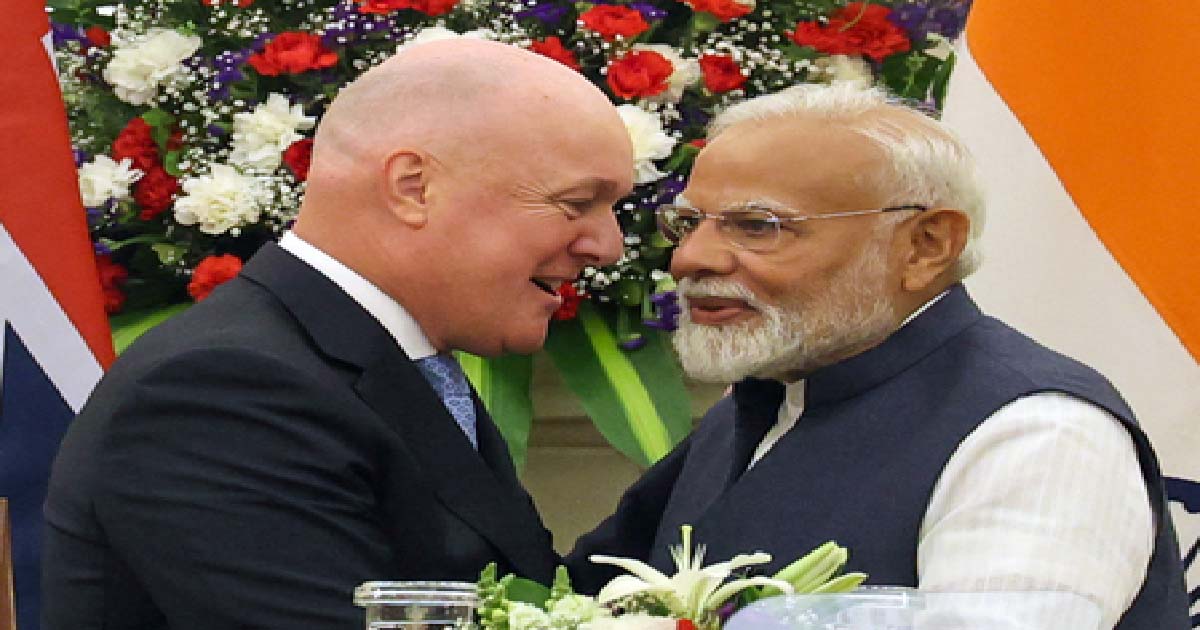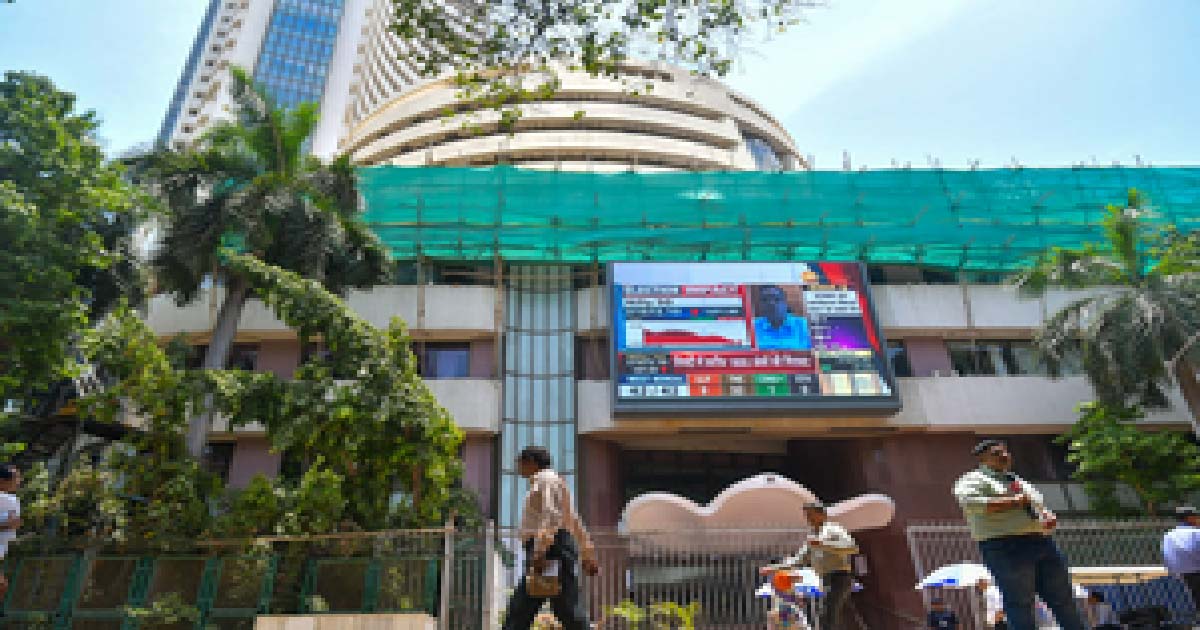Business
Sanjiv Puri’s ‘ITC Next’ strategy to drive into commanding position in FMCG industry market
Powered by mega brands such as Aashirvaad, Sunfeast, Bingo!, Classmate, and Savlon, ITC is set to drive into a commanding position in what some analysts have estimated to be a Rs 5 lakh crore addressable FMCG industry market segment by 2035, with Chairman Sanjiv Puri putting in motion a carefully crafted ‘ITC Next’ strategy.
This re-crafted strategy, built around portfolio revitalisation, rapid platform-based innovation, aggressive digitisation, deeper synergies with other group businesses, structural leverages and a sharper focus on margins.
As an FMCG major, ITC is the only company that is dominant across a range of product categories from branded atta to biscuits; snacks to spices; noodles to dairy; chocolates to coffee; juices to frozen snacks and vegetables; deodorants to hand and body wash; sanitizers and masks to floor cleaners; and from notebooks to agarbatti, that none of the other Indian or multinational brands can claim to be present in.
Puri’s ‘ITC Next’ strategy pivots around a multi-pronged approach to revitalize the company’s current FMCG portfolio by fortifying and scaling up its proven megabrands, leveraging adjacencies through horizontal brand extensions, and nurturing new platforms with innovative products that will scale up to be leaders in their respective categories.
Mega brands and adjacencies
ITC has a plethora of megabrands such as Aashirvaad, Sunfeast, Bingo! and Classmate that already command leadership positions in the market.
The strategy of creating value added adjacencies could be best illustrated by the new Aashirvaad portfolio including Aashirvaad Nature’s Super Foods range comprising ragi flour, multi-millet mix, gluten free flour, organic atta and pulses as well as chapatis, instant meals and the Aashirvaad Svasti dairy range.
ITC is also fostering new platforms and strengthening its new brands including Fabelle chocolates, Sunbean coffee, B Natural juices, Nimyle home cleaners, Savlon hygiene products and so on. The overarching strategy for new platforms of innovative products is to first validate the concept and business model in select beachheads. Having gained a dominant market penetration, these new lines of products and brands will gain strength to occupy adjacent markets with different opportunities, building a larger brand with each new product, creating new and steady vectors of growth for the future.
ITC under Puri is unwavering in its resolve to build a formidable FMCG business. With innovation as the new lifeblood, the company today is one of the largest incubators of world-class Indian brands.
The Company’s wide range of FMCG portfolio has demonstrable headroom to expand rapidly in the FMCG industry overall addressable market segment of Rs 5 lakh crore.
For instance, the total size of the packaged snacksmarket for the overall industry is set to vault 4.5 times from about Rs 32,000 crore to an estimated Rs 1.43 lakh crore by 2035. The market for overall spices industry is projected to grow from about Rs 22,000 crore currently to Rs 1.1 lakh crore in 15 years, a growth of five times. Similar industry growths are expected in other categories such as biscuits, branded atta, noodles, deodorants, personal care products and the cleaners categories.
Most of ITC’s FMCG products occupy the first or the second positions in their respective categories giving them unique opportunity to corner most of these segment growths.
Aashirvaad, India’s number one branded packaged atta, itself has a consumer spend of over Rs 6,000 crore.
Digital, consumer-centric and future-ready
Puri’s strategy to make ITC future-ready manifests in his focus on driving the three megatrends emerging out of the pandemic – innovation, digitalisation and sustainability. The Company’s R& D Centre, the ITC Life Sciences and Technology Centre (LSTC) in Bengaluru helped ITC to launch 120 differentiated products amid the pandemic to meet emerging preferences. To further support this goal, the company has set up 9 state-of-the-art integrated consumer goods manufacturing facilities (ICML) to create structural advantages.
Digitalisation is being accelerated pan-ITC through the use of new technologies such as Industry 4.0, Artificial Intelligence, Machine Learning, Big Data, Industrial Internet of Things (IoT), etc. These technologies are also being deployed across the entire supply chain spanning sourcing, manufacturing, trade engagements and e-commerce, including its own ordering platform the ITC e-store. The FMCG business has further driven enhanced competitiveness through a multi-channel distribution strategy which have been strengthened by-customised apps.
Power of Synergies
The ‘ITC Next’ FMCG strategy has also been bolstered by synergies flowing in from the company’s other businesses.
A good example of synergies is ITC’s foods business deriving a significant competitive advantage from agribusiness’s sourcing capabilities. The culinary expertise of ITC’s Hotels business has also enabled ITC to craft differentiated food offerings.
Stronger growth, better margins
The robustness of Puri’s strategy for FMCG is evident from the segment EBIDTA (earnings before interest, taxes, depreciation and amortisation) increasing by by 82 per cent this Q2 from Q2 FY 20, as outlined in ITC’s second quarter financial results.
The FMCG businesses have been posting steady growth ahead of industry peers. During the last four years, ITC’s revenue from FMCG increased from around Rs 10,500 crore to nearly Rs 15,000 crore.
ITC’s FMCG business during 2020-21 grew 16 per cent versus the industry average of 8.5 per cent.
There has also been a steady improvement in profitability in the FMCG segment, with EBITDA margins having improved by more than 640 basis points between 2016-17 and 2020-21.
‘ITC Next’ strategy for other businesses
In August, at the company’s annual general meeting, Puri unveiled the extensive ‘ITC Next’ strategy to architect the structural drivers that will power ITC’s next horizon of growth and ensure that the enterprise remains future-oriented, consumer-centric and nimble.
ITC’s other businesses too have pivoted to create new frontiers for the future, with enhanced competitiveness as well as sharper focus on cost management to strengthen leadership or rapidly attain the top positions in the case of newer segments.
Some of the key drivers of growth, as identified by Puri, for ITC’s other businesses include an asset right strategy for Hotels powered by a repositioned WelcomHotel brand as well as newly launched brands such as The Storii and Mementos done with management contracts. Two management contracts have already been signed under the Mementos brand.
Similarly, in the Paperboards business, the company is concentrating on sustainable packaging and value-added paper, while in agriusiness, the emphasis is on Next Generation agriculture driven by the ‘super app’ ITC MAARS and value-added agriculture.
Special strategic thrust is also being provided to ITC Infotech, the wholly owned subsidiary which is on a strong growth and profitability trajectory over the last few years.
Business
India-New Zealand FTA: PM Modi, Luxon aim to double bilateral trade over 5 years

New Delhi, Dec 22: Prime Minister Narendra Modi held a telephone conversation with New Zealand’s Prime Minister, Christopher Luxon, on Monday as the two leaders jointly announced the successful conclusion of the historic, ambitious and mutually beneficial India-New Zealand Free Trade Agreement (FTA).
During the conversation, both leaders expressed confidence in doubling bilateral trade over the next five years as well as an investment of $20 billion in India from New Zealand over the next 15 years.
The negotiations began in March this year and the two leaders concluded the FTA in a record time of nine months, reflecting the shared ambition and political will to further deepen ties between the two countries, according to a statement from Prime Minister’s Office (PMO).
“The FTA would significantly deepen bilateral economic engagement, enhance market access, promote investment flows, strengthen strategic cooperation between the two countries, and also open up new opportunities for innovators, entrepreneurs, farmers, MSMEs, students and youth of both countries across various sectors,” said the statement.
The leaders also welcomed the progress achieved in other areas of bilateral cooperation such as sports, education, and people-to-people ties, and reaffirmed their commitment towards further strengthening of the India-New Zealand partnership.
This historic FTA eliminates and reduces tariffs on 95 per cent of New Zealand’s exports – among the highest of any Indian FTA – with almost 57 per cent being duty-free from day one, increasing to 82 per cent when fully implemented, with the remaining 13 per cent subject to sharp tariff cuts.
It puts New Zealand exporters on an equal or better footing to our competitors across a range of sectors and opens the door to India’s rapidly expanding middle class, according to an official statement from New Zealand.
“The Indian economy is forecast to grow to NZ$12 trillion by 2030. The India-NZ Free Trade Agreement unleashes huge potential for our world-class exporters to the world’s largest country and will significantly accelerate progress towards New Zealand’s ambitious goal of doubling the value of exports over 10 years,” it added.
Business
Mumbai-Bound Air India Flight Returns To Delhi Airport Minutes After Take Off Due To Technical Glitch

New Delhi: A Mumbai-bound Air India flight AI887 returned to the Delhi Airport minutes after take-off due to a technical issue. The Delhi–Mumbai flight made an emergency landing according to standard operating procedure.
As perv an Air India spokesperson, the aircraft (Boeing 777) landed safely at Delhi, and the passengers and crew disembarked.
The Boeing 777 suffered an engine issue soon after take-off, reported The Times of India. The aircraft reportedly took off at 6.10 am and returned to the airport at 6.52 am. The aircraft is currently undergoing necessary checks.
As per the report, the airline arranged another B777 (VT-ALP) for passengers and even provided refreshments for them.
On Sunday, over 100 flights were cancelled from the Delhi Airport due to dense fog conditions in the national capital. Meanwhile, more than 400 flights were also delayed at the airport.
Over the past few days, most parts of the nothern and northwestern regions of the country are witnessing dense fog condition.
“Dense to very dense fog conditions during night/morning hours very likely in some parts of Uttarakhand, Uttar Pradesh, Haryana till morning hours of 21st; in isolated pockets of Punjab, Haryana during 25th-27,” the India Meteorological Department (IMD) had said in its press statement on Sunday.
On Friday also, an Air India flight travelling from Mumbai to Varanasi was forced to make an emergency diversion to Bhubaneswar after deteriorating weather conditions made landing at the destination airport unsafe. The aircraft landed at Biju Patnaik International Airport (BPIA) as a precautionary measure, airline officials confirmed.
Business
Sensex, Nifty open in green zone amid positive global cues

Mumbai, Dec 22: Indian benchmark indices opened in green zone on Monday, breaking the last week’s trend of edging lower, amid strong buying in the US and China markets.
As of 9.30 am, the Sensex advanced 507 points, or 0.60 per cent, at 84,436 and the Nifty added 165 points, or 0.64 per cent to 26,132.
The broad cap indices performed in line with the benchmarks, with the Nifty Midcap 100 up 0.58 per cent and the Nifty Smallcap 100 adding 0.51 per cent.
Hindalco, Tech Mahindra and TCS were among the major gainers in the Nifty Pack, while losers included Asian Paints, Bajaj Finance, Max Healthcare and Cipla.
All the sectoral indices on NSE were trading in the green with metal, IT and media being the major gainers — up around 1.48, 1.23 and 0.77 per cent, respectively.
Analysts noted that market is likely heading for a year-end rally. The rupee’s sharp reversal and FIIs’ cash market purchases can accelerate this rally, as they lead to short covering, pushing benchmark indices higher. The Goldilocks domestic economic set up and potential earnings growth uptrend can support a market upturn, they added.
The US markets ended mostly in the green zone on the last trading day, as Nasdaq advanced 1.31 per cent, the S&P 500 edged up 0.88 per cent, and the Dow moved up 0.38 per cent.
As investors parsed China’s central bank keeping loan prime rate steady, Asia-Pacific markets rose on Monday.
The People’s Bank of China maintained its 1-year and 5-year loan prime rates steady, which affects most new and outstanding loans and mortgages.
In Asian markets, China’s Shanghai index advanced 0.64 per cent, and Shenzhen dropped 1.36 per cent, Japan’s Nikkei edged up 1.75 per cent, while Hong Kong’s Hang Seng Index added 0.29 per cent. South Korea’s Kospi added 1.72 per cent.
On Friday, foreign institutional investors (FIIs) sold equities worth Rs 2,387 crore, while domestic institutional investors (DIIs) were net buyers of equities worth Rs 5,200 crore.
-

 Crime3 years ago
Crime3 years agoClass 10 student jumps to death in Jaipur
-

 Maharashtra1 year ago
Maharashtra1 year agoMumbai Local Train Update: Central Railway’s New Timetable Comes Into Effect; Check Full List Of Revised Timings & Stations
-

 Maharashtra1 year ago
Maharashtra1 year agoMumbai To Go Toll-Free Tonight! Maharashtra Govt Announces Complete Toll Waiver For Light Motor Vehicles At All 5 Entry Points Of City
-

 Maharashtra1 year ago
Maharashtra1 year agoFalse photo of Imtiaz Jaleel’s rally, exposing the fooling conspiracy
-

 National News1 year ago
National News1 year agoMinistry of Railways rolls out Special Drive 4.0 with focus on digitisation, cleanliness, inclusiveness and grievance redressal
-

 Maharashtra1 year ago
Maharashtra1 year agoMaharashtra Elections 2024: Mumbai Metro & BEST Services Extended Till Midnight On Voting Day
-

 National News1 year ago
National News1 year agoJ&K: 4 Jawans Killed, 28 Injured After Bus Carrying BSF Personnel For Poll Duty Falls Into Gorge In Budgam; Terrifying Visuals Surface
-

 Crime1 year ago
Crime1 year agoBaba Siddique Murder: Mumbai Police Unable To Get Lawrence Bishnoi Custody Due To Home Ministry Order, Says Report












